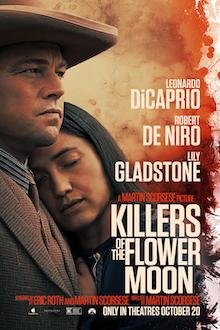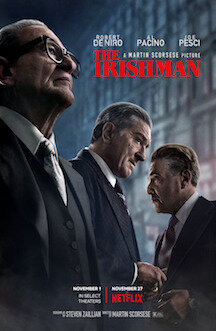Direction: Martin Scorsese
Country: USA
Displaying a personal filmic vision, Martin Scorsese directs the historical western crime film, Killers of the Flower Moon, with insight and restraint, benefiting from outstanding performances by Leonardo DiCaprio, Robert De Niro, and Lily Gladstone. This epic and tragic account accurately depicts Oklahoma in the 1920s, portraying the series of murders of the native Osage tribe by greedy, powerful white men coveting their lands and oil headrights. The asphyxiating monstrosity of the actions is encouraged by a corrupt and racist system that threatens the cultural survival of the Native American tribe in question.
The screenplay, co-written by Scorsese and Eric Roth, based on David Grann’s nonfictional book of the same name, follows the war veteran Ernest Burkhart (DiCaprio), advised by his corrupt uncle and crime lord, William King Hale (De Niro), to marry the wealthy Indian Mollie Kyle (Gladstone). One of after another, members of her family are mercilessly murdered until the arrival of a Bureau of Investigation team led by agent Thomas Bruce White Sr. (Jesse Plemons).
We are caught in the gut with this painful reflection on the American history, transformed in a momentous, highly entertaining picture. Scorsese's impressive narration, not praising violence but rather coming to terms with it, flows at a constant pace. The film is nourished by extraordinary performances by the three leads, an accomplished blues-roots score by the late Robbie Robertson, impeccable editing by Thelma Schoonmaker, and delightful images - sharpened by Mexican cinematographer Rodrigo Prieto - forming a masterfully staged fresco darkly hued by cynicism, avidity, and transgression.











